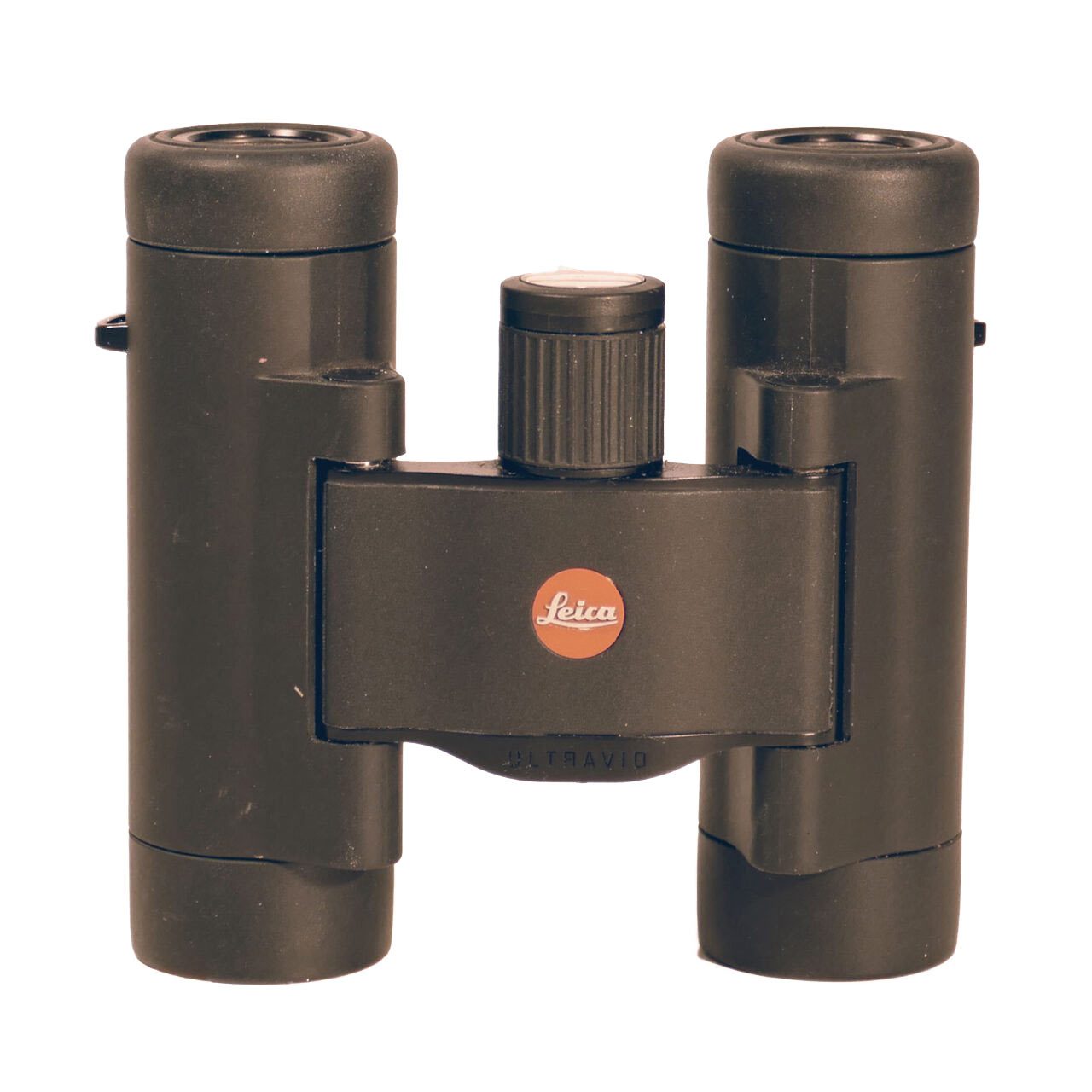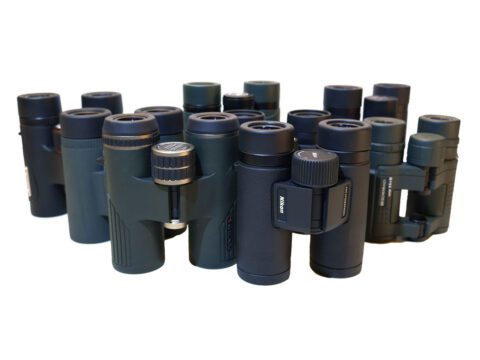Leica Ultravid 8×20 Binoculars: Our Review
Tiny, beautifully constructed binoculars with premium optics—we rated these one of our Top Picks.
July 23, 2024At A Glance

PROS:
- Excellent optics: very sharp and bright
- Tiny size and light weight
- Focus wheel is in reach of both forefinger and thumb
CONS:
- Narrow eyecups can take extra time to align with eyes
- Double-hinge design requires frequent readjustments to fit eyes
STATS:
- Price: $929 MSRP at press time. Prices often fluctuate, so check with retailers
- Close focus: 5.9 feet (180 cm)
- Field of view: 6.5° (341 feet at 1,000 yards). More about field of view
- Weight: 8.5 oz (242 g)—that’s about 2.1 oz (60 g) lighter than the average for pocket binoculars in our review
- Eye relief: 16 mm
Viewing Experience: The Leica Ultravid 8×20 is a premium-priced pocket binocular, and it doesn’t disappoint. Looking through these binoculars is a joy, with brilliant light and vivid color that is sharp all the way out to long ranges. In early spring, a male Ruddy Duck in the middle of a lake was brilliant cinnamon with a sharp white cheek and blue bill. On the near shore, a couple of Savannah Sparrows foraging in the short grass were a marvel of sharp straw-yellow and dark brown steaks on crisp white, and the peachy pink legs almost glowed. These 8×20 Leicas are almost exactly the same size as the Swarovski Curio 7×21—the two smallest binoculars in our review. Either is a great choice if you’re looking for tiny but excellent binoculars, though you’ll have to decide whether you prefer a noticeably closer (larger) view from the 8x Leicas, or a bit brighter image and better field of view from the 7x Swarovskis.
More on Binoculars
Feel and Build: These are tiny binoculars that all but disappear into your hands—a very appealing choice if you’re looking for the smallest high-quality binoculars you can find. But the small size does come with some drawbacks—mainly that they can be fiddly. The focus wheel moves smoothly, but it’s so small that you have to take care when dialing in the focus precisely. Fortunately the minimal bridge design means you can grip the focus wheel between thumb and forefinger, making focusing easier. The double-hinge design helps the Leicas pack down small, but makes it easy for the barrels to drift out of position, requiring frequent readjustment that can make it slower to get onto birds. And though the eyecups are comfortable and deep, the small design means they’re not quite wide enough to fit easily over the whole eye—you may find yourself holding the binoculars slightly off your eyes, which can make for less stable viewing and can allow peripheral light to bleed in. Nevertheless, for people looking for brilliant optics in an almost-not-there package, these are an excellent choice.
This article is one in a series of mini-reviews. To see how these binoculars compare to others we’ve tested, see our full review of pocket binoculars.


All About Birds
is a free resource
Available for everyone,
funded by donors like you
American Kestrel by Blair Dudeck / Macaulay Library



